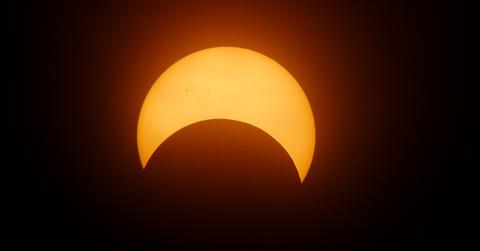How Solar Energy Producers Are Preparing For The Aug. 21 Eclipse
In one week, a solar eclipse will be impacting the majority of the United States in a significant way. This will cause solar generation sources to lose even more efficiency, and luckily utility companies are already ahead of the situation to control it.
Updated May 23 2019, 9:49 a.m. ET
A total solar eclipse will be affecting a line of United States residents throughout the day on Monday, August 21st. While some are making last-minute travel plans to view the first eclipse in five years, solar farms and utility companies are preparing for periods of time with less solar power generation.
Even for places that aren’t dealing with a total blackout, there’s enough blockage from the moon creating less efficiency. Solar panels that can be purchased commercially feature up to 22.5 percent efficient. A number of factors include varying weather, panels not being clean, and unique events like a solar eclipse.
The full eclipse is on a narrow line that begins in North Oregon and arcs downward. It will go through Idaho, Wyoming, Nebraska, Missouri, Southern Illinois, Western Kentucky, Tennessee, and South Carolina, In that last area, it will also affect extreme western parts of North Carolina and Northeast Georgia.
All places in that line will see a total solar eclipse for a little over two minutes. The West Coast sees it earlier in the day. Many more places around the line will be able to see at least a partial eclipse throughout the daytime anywhere from three to four hours. Those that want to see the event firsthand should prepare for an expected horrible traveling day in the total eclipse line as well as getting solar viewing glasses or filters for their telescope.
Why is the total eclipse such a fun event to experience? Not only is it rare, but those that have studied and witnessed the event have marveled at it. “It’s a visceral reaction. You feel something in the pit of your stomach like something is wrong in the day, something is not right,” says Fred Espenak, a retired NASA astrophysicist, in an interview with TIME. Espenak has seen 27 of them on seven different continents.
There is something that goes wrong during the eclipse, and that’s solar energy production. Luckily, utility companies that gather energy from these sources are preparing for it. Most of the United States will be impacted in some form, so power will simply be gathered from other sources, regardless of whether it's renewable or not.
In order to help balance out electrical grids, some utilities are promoting customers to turn off lights and be more efficient with energy usage -- especially in the western half of the US. When the eclipse happens in the Southeast, this will affect those coming home from work and it will be during the hottest time of the day. This is where utilities will have to monitor the situation closely when lights are turned on at home and air conditioning is used more frequently.
This will be the first time a solar eclipse has affected the United States in over five years, and the next one won’t be happening until 2024. It’ll likely have a bigger impact as more places will be relying on solar, especially in the Midwest where the total eclipse will be happening. Until then, this could serve as a trial run for the next impact.
